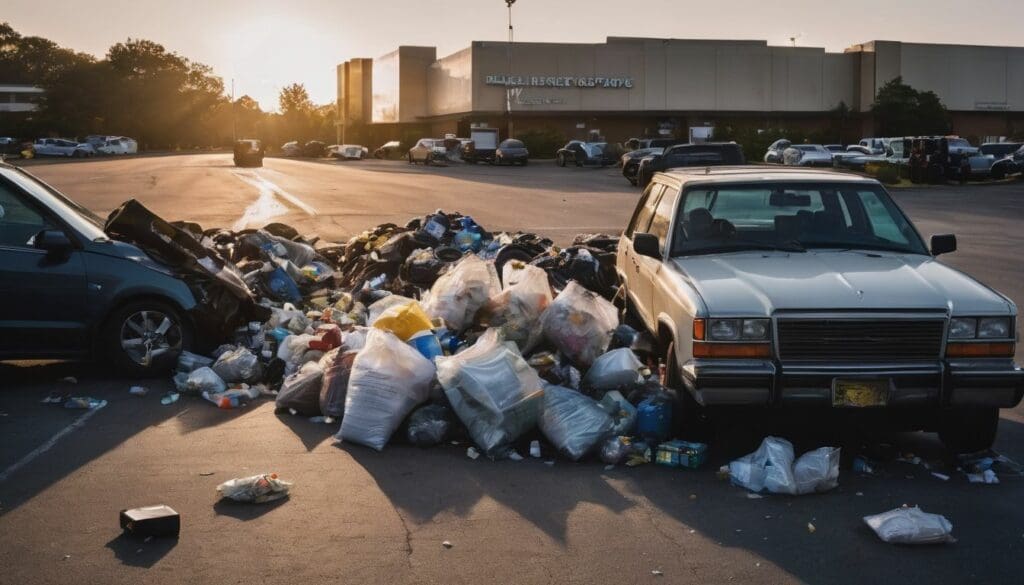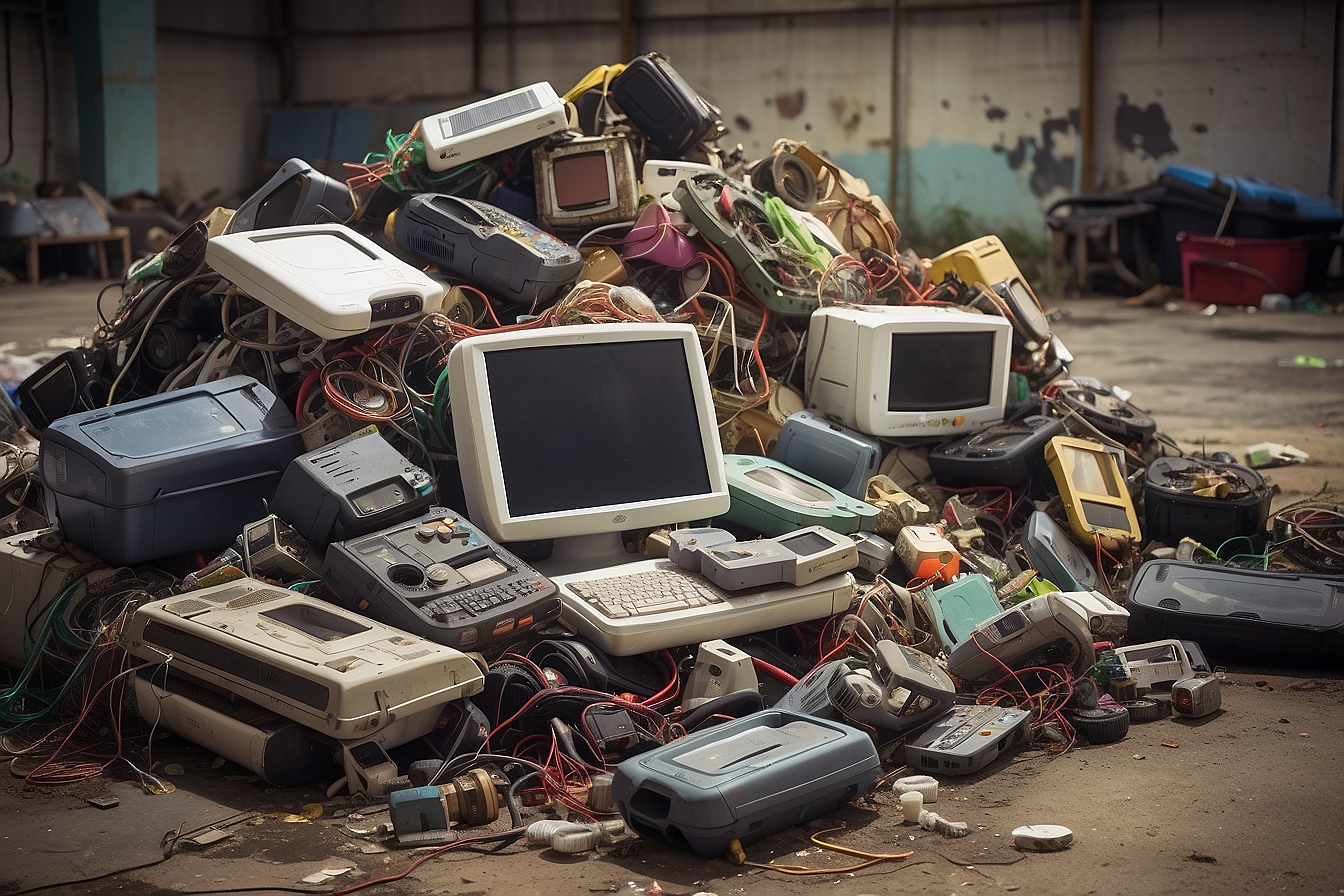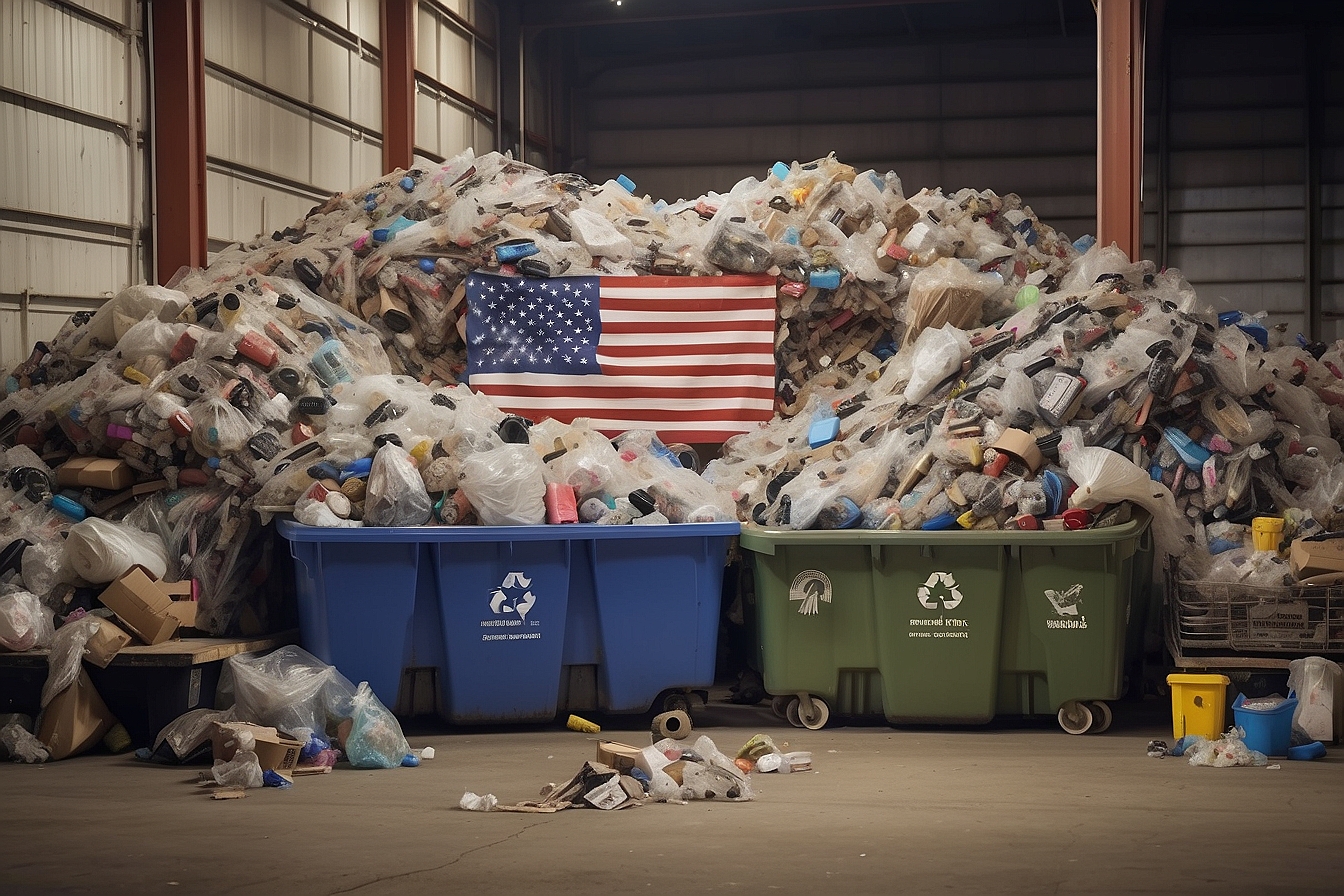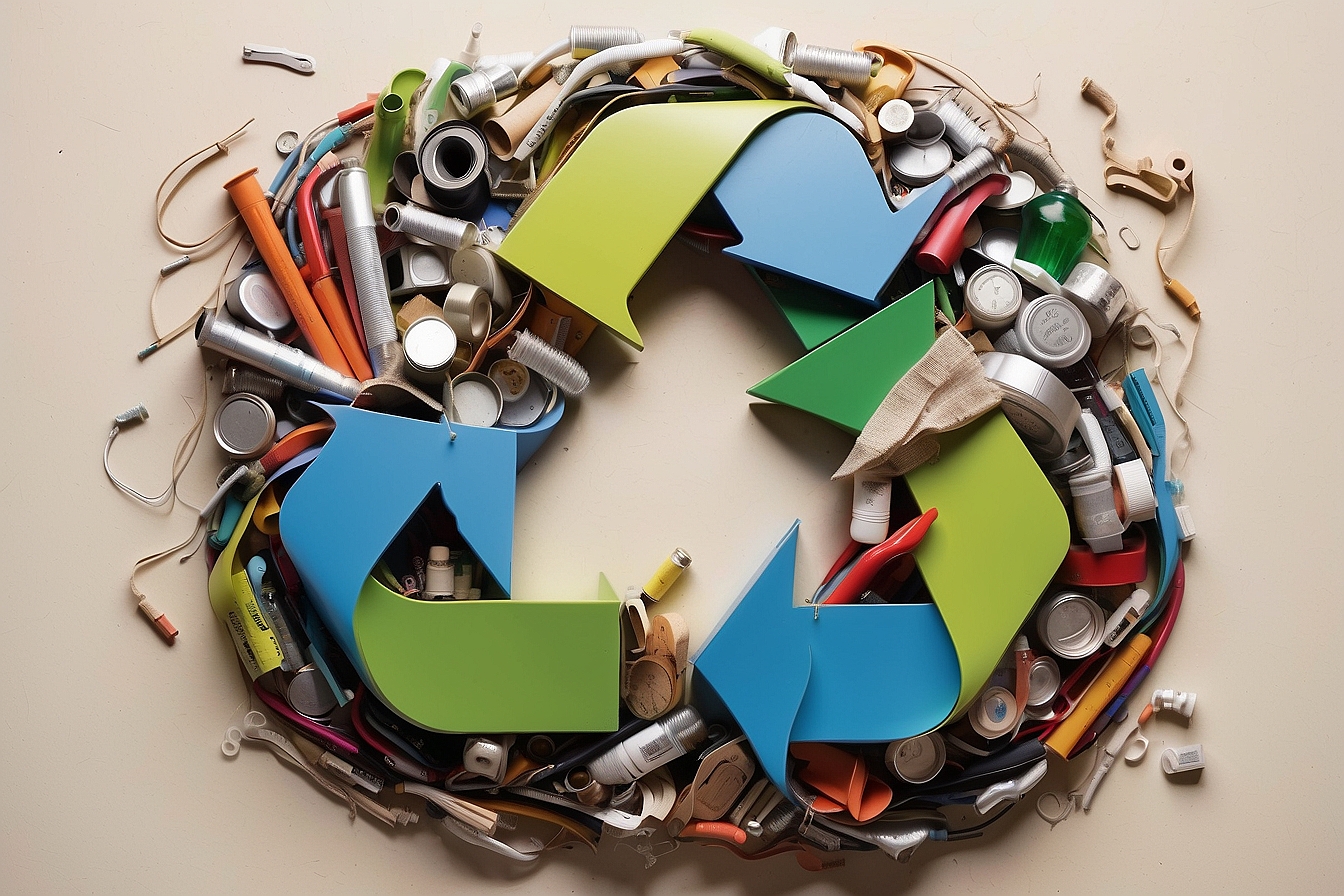As we navigate the aftermath of the pandemic, many of us find ourselves confronting a rather unexpected environmental quandary – the mountainous rise in medical waste. It’s a sobering truth that our green spaces and oceans could become graveyards for discarded masks and gloves; indeed, an overwhelming 87,000 tonnes of PPE have already turned to refuse.
This stark reality has galvanised us into action as we earnestly search for efficacious means to dispatch these unwanted by-products responsibly. The following insights are steeped in practicality, aiming to alleviate some strain from our beleaguered waste management systems.
Continue reading as we explore together how each one of us can contribute to turning this tide.
Key Takeaways
- The COVID – 19 pandemic has resulted in a dramatic increase in medical waste, with an additional 87,000 tonnes of PPE becoming refuse.
- This surge has put immense pressure on existing waste management systems and has presented healthcare workers with heightened challenges in disposal processes.
- Proper segregation, utilisation of colour – coded bins, staff training on disposal methods, regular monitoring and adopting environmentally friendly practices are key steps to improving medical waste management during the pandemic.
- Investing in updated waste management systems is essential for efficiently handling the increased biomedical waste volumes and protecting environmental and public health.
- Technological innovations in medical waste disposal are emerging as critical solutions to reduce environmental impact whilst safely managing hazardous healthcare waste.
Impact of COVID-19 Pandemic on Medical Waste Disposal
The COVID-19 pandemic has significantly increased the amount of medical waste generated, putting a strain on waste management systems and posing challenges for healthcare workers. Proper disposal of PPE and biohazardous waste has become more crucial than ever in order to prevent the spread of infectious materials.
Increase in waste amounts
Since the pandemic struck, we’ve witnessed an unprecedented surge in medical waste. Hospitals and healthcare facilities are battling with soaring amounts of disposable protective equipment, single-use plastics, and contaminated items.
From gloves to gowns, face shields to masks, COVID response measures have generated a massive spike in both hazardous and non-hazardous waste.
Our immediate challenge is handling this influx responsibly without harming our environment. We must update current biomedical waste practices and scale up capacity to deal with the additional load.
This means enhancing our solid waste management during the pandemic has become critical. As conscientious guardians of public health and environmental safety, it’s our duty to address these rising volumes head-on through smart innovations and sustainable approaches in medical waste disposal.
Strain on waste management systems
The increase in waste amounts due to the pandemic has put a significant strain on waste management systems. Handling the surge in medical, hazardous, and infectious waste from healthcare facilities has become a major challenge.
The demand for proper disposal of PPE waste, biohazard materials, and other medical wastes has overwhelmed existing systems.
Healthcare workers are facing immense pressure to manage and dispose of these increased volumes of medical waste safely and efficiently. Moreover, the need for stringent protocols and protective measures adds complexity to an already overloaded process.
Challenges for healthcare workers
Navigating the strain on waste management systems, healthcare workers face significant challenges in managing the increased volume of medical waste. This surge not only requires additional time and resources for proper disposal but also puts them at higher risk of exposure to hazardous materials.
Juggling patient care with stringent waste handling protocols adds a layer of complexity to an already demanding job, requiring heightened vigilance and adherence to strict guidelines.
Contending with these obstacles while ensuring efficient and safe medical waste disposal is paramount for protecting both public health and environmental well-being.
Improving Medical Waste Management in the Pandemic Era
We can improve medical waste management in the pandemic era by implementing proper waste disposal techniques, investing in waste management systems, and embracing innovations in medical waste disposal technology.
These measures are crucial for ensuring the safe and efficient handling of healthcare waste during these challenging times.
Implementation of proper waste disposal techniques
To manage medical waste effectively during the pandemic, we must implement proper waste disposal techniques. This involves:
- Segregation of waste at the source to separate infectious and hazardous materials from general waste, reducing the risk of contamination and enhancing safety for waste handlers.
- Utilisation of colour – coded bins and labels to clearly distinguish different types of medical waste, ensuring proper handling and disposal in accordance with regulations.
- Training healthcare staff on proper waste segregation and disposal methods to prevent cross-contamination and reduce the volume of hazardous waste generated.
- Regular monitoring and auditing of waste management practices to ensure compliance with regulatory standards and identify areas for improvement.
- Adoption of environmentally friendly alternatives, such as recycling or autoclaving certain types of medical waste, to minimise the environmental impact of disposal processes.
Investment in waste management systems
Investing in waste management systems is crucial for addressing the surge in medical waste during the pandemic. Allocating funds towards modernising waste disposal infrastructure allows for efficient handling of increased biomedical waste volumes, ensuring environmental and public health protection.
Upgrading existing facilities and equipment, incorporating advanced technologies like autoclaving or chemical treatment, and implementing stringent regulations are essential steps to handle the unprecedented amounts of hazardous healthcare waste generated during this critical period.
Furthermore, promoting research into sustainable alternatives to traditional incineration methods is vital for reducing carbon emissions and conserving energy. Our commitment to investing in state-of-the-art medical waste management systems demonstrates our dedication to safeguarding both public health and the environment amid these challenging times.
Innovations in medical waste disposal technology
The pandemic has driven innovations in medical waste disposal technology, leading to safer and more efficient methods for managing healthcare waste. New advancements have focused on reducing environmental impact while effectively disposing of hazardous materials, such as PPE waste and biohazardous substances.
These breakthroughs include the development of advanced sterilisation systems, improved recycling processes for medical plastics, and the use of cutting-edge robotics for handling infectious materials.
These innovations play a crucial role in promoting sustainable healthcare practices and ensuring the safe management of medical waste during this challenging period.
Moving forward to improve waste disposal techniques is vital in mitigating the impacts of the pandemic. For environmentally conscious individuals like us who support conservation efforts, staying informed about these technological developments can help us make more sustainable choices when it comes to medical waste disposal.
Conclusion
In conclusion, handling medical waste in the pandemic era requires careful planning and implementation of proper disposal techniques. Healthcare facilities must invest in effective waste management systems to cope with the increased volume of waste.
Innovations in medical waste disposal technology can help mitigate the impact on the environment and public health. By prioritising safe and sustainable practices, we can ensure that healthcare waste is managed responsibly during these challenging times.
FAQs
1. How has the pandemic changed medical waste disposal?
The pandemic caused a surge in healthcare waste generation, including PPE and biohazardous materials, requiring strict biomedical waste disposal procedures to manage the increased volume safely.
2. What kinds of waste are included in COVID healthcare waste?
COVID healthcare waste includes used PPE like masks and gloves, as well as any other infectious or hazardous waste from treating patients with COVID-19.
3. How do hospitals manage pandemic era waste disposal?
Hospitals follow medical waste regulations that involve segregating, containing, and handling all pandemic-related biohazardous and medical wastes carefully before they undergo safe incineration or other approved disposal methods.
4. Is there an increase in solid waste management during the pandemic?
Yes, there has been a significant rise in solid medical waste management needs during the pandemic due to heightened hospital activity and widespread use of disposable protective equipment.
5. Why is proper healthcare waste disposal critical in the Pandemic Era?
Proper healthcare wastage disposal is crucial to prevent environmental contamination and disease spread from potentially infectious or hazardous materials generated by heightened activities in healthcare settings during pandemics.





